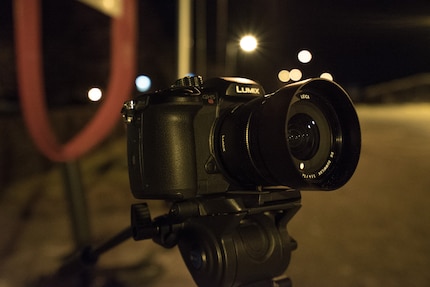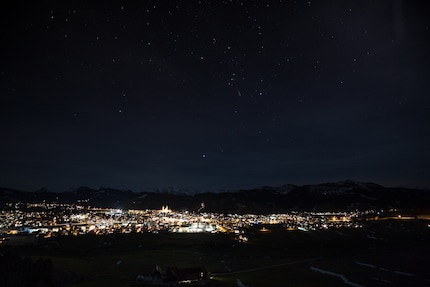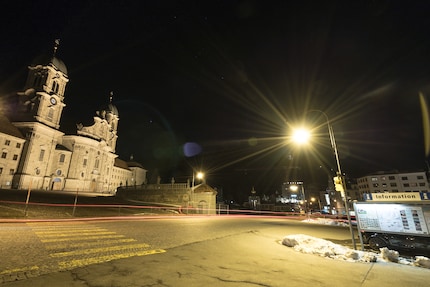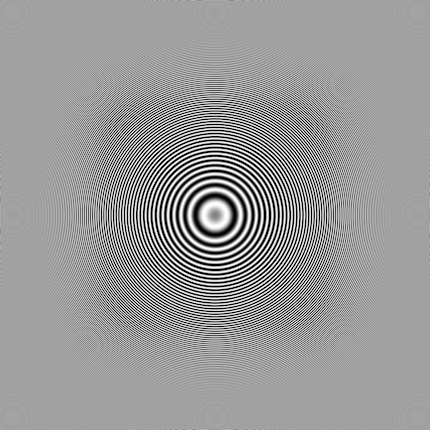
Panasonic GH5s: The camera for video producers
At CES 2018 in Las Vegas at the beginning of January, Panasonic presented the GH5s: a new camera specially developed for filmmakers. I took a closer look at the device, which costs around 3,000 francs, over the past few weeks.
A chat with the product managers in the Photo and Video division, centred around Denny Phan, is always enriching. They usually talk about new products such as drones and cameras or what's currently bubbling in the rumour mill. This time Denny hands me a camera, the new Panasonic GH5s, and asks me if I can do anything with it. Of course he does! Unveiled at the CES in Las Vegas at the beginning of January and now already in my hands.
Recording modes that are unrivalled in this price range
The unique selling point of the GH5s is the ability to film at 4k 422 10 bit and 400 Mbps. No other camera in this price range and size can keep up. With the additional V-Log Picture Profile to extend the dynamic range, the camera can also keep up with much more expensive models or serve as a B-camera on a professional set.
While you still had to fork out 100 francs for a V-Log update on the sister model GH5, V-Log is now already included in the price. A LUT (Look Up Table) can also be switched on if required in order to see an image on the screen that corresponds more closely to reality. You can also display either the waveform or a vectorscope. However, given the size of the display, this is only recommended if you have an external screen available.
A low-light monster
The GH5s in an environment where it feels at homeThe noise behaviour of the GH5 is worlds worse than that of the GH5s. Even at an ISO value of 3200, the image is barely usable. At these values, both the GH5s and the A7Sii are still without visible noise.
By-products of the low-light test - long-exposure photosWithout stabiliser - but not without reason
To demonstrate the difference between the cameras, I walked through our offices and put the shots side by side. The results surprised me. The GH5 does an excellent job and walking through the office almost feels like travelling on rails. However, the A7Sii, which also has a stabilised sensor, wobbles a lot. Almost as much as the GH5s without a stabilised sensor.
Readers ask - I try to answer
A few weeks ago, I announced this article and asked what you would like to know about the camera. A few questions came up that I'm sure have now been answered. I'll try to answer the remaining questions below.
When testing the battery life, I also find my biggest point of criticism. If you film for longer than 30 seconds without pressing a button or touching the screen, the camera automatically reduces the screen brightness. This is a real pain, especially with longer takes and in direct sunlight. Unfortunately, there is no option in the menu to switch off this dimming or at least delay it. Anyone who can prove me wrong, please let me know.
Update 24/04/2018: User Christoph has just proved me wrong. Here and from 9.40 it is explained.
I test moiré by filming a black and white circle on the screen with each camera. Wikipedia defines moiré as follows:
The moiré effect refers to an apparent coarse raster created by the overlapping of regular, finer rasters. The resulting pattern, whose appearance is similar to the patterns from interference, is a special case of the alias effect caused by undersampling.
Moiré is clearly less visible with the GH5s than filmed with the GH5. GH5s and Sony are in a similar range.
Reader "Günterholz" wanted to know how the dynamic range has changed compared to the sister camera. Unfortunately, this is very difficult to test. Laboratory conditions would be an advantage. But what I can say: With both cameras, the dynamic range can be extended by a few f-stops with the V-Log photo profile. These should also be within a similar range due to the same profile.
The questions from "MakeAppsNotWar" and "[Anonymous]" should have been answered above.
Should I buy the GH5 or the GH5s now?
Are you more than an ambitious filmmaker and are you planning to realise larger, professional projects? Then you are definitely better off with the GH5s than the GH5. But then the camera alone is not enough. A slider, gimbal and a cage for additional accessories such as a screen are at least not a bad idea.
If you intend to take photos or film something from your hand, be it a short reportage, a wedding or a vlog for your YouTube channel, then you are better off with the GH5. The only big negative point here is the rather poor low light performance. Be aware that anything above ISO 1600 is barely usable.
But the fact is: the Panasonic GH5 and the GH5s are great cameras.
As a Multimedia Producer, preparing multimedia content and knowing about cutting-edge technology is my business. My main focus at digitec is producing videos. I can’t wait to try out new products such as cameras, drones or smartphones as soon as they’re launched. This is where being at the source comes in rather handy. When I’m not working, I’m probably skiing, biking or hiking – the mountains are my place to be.




